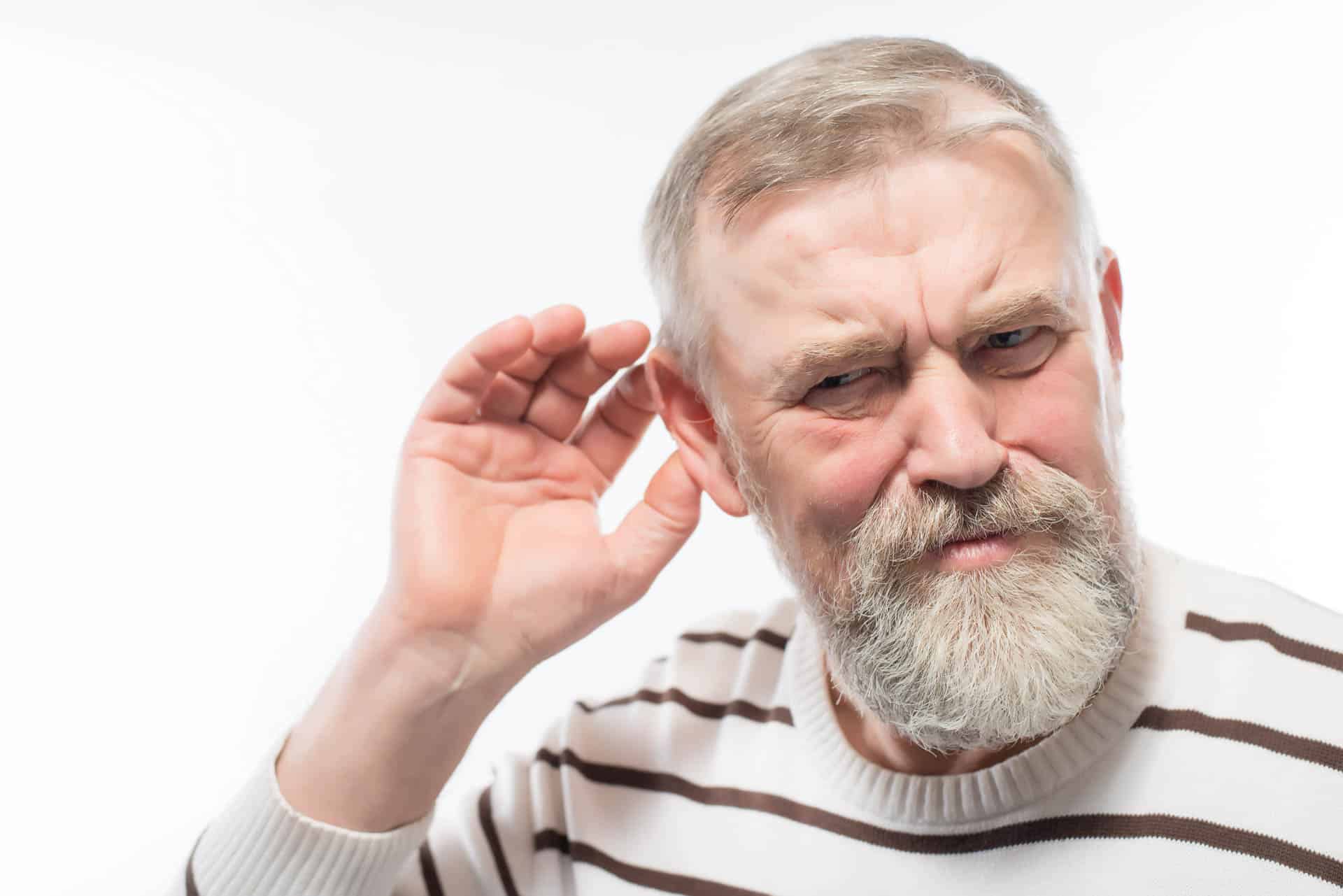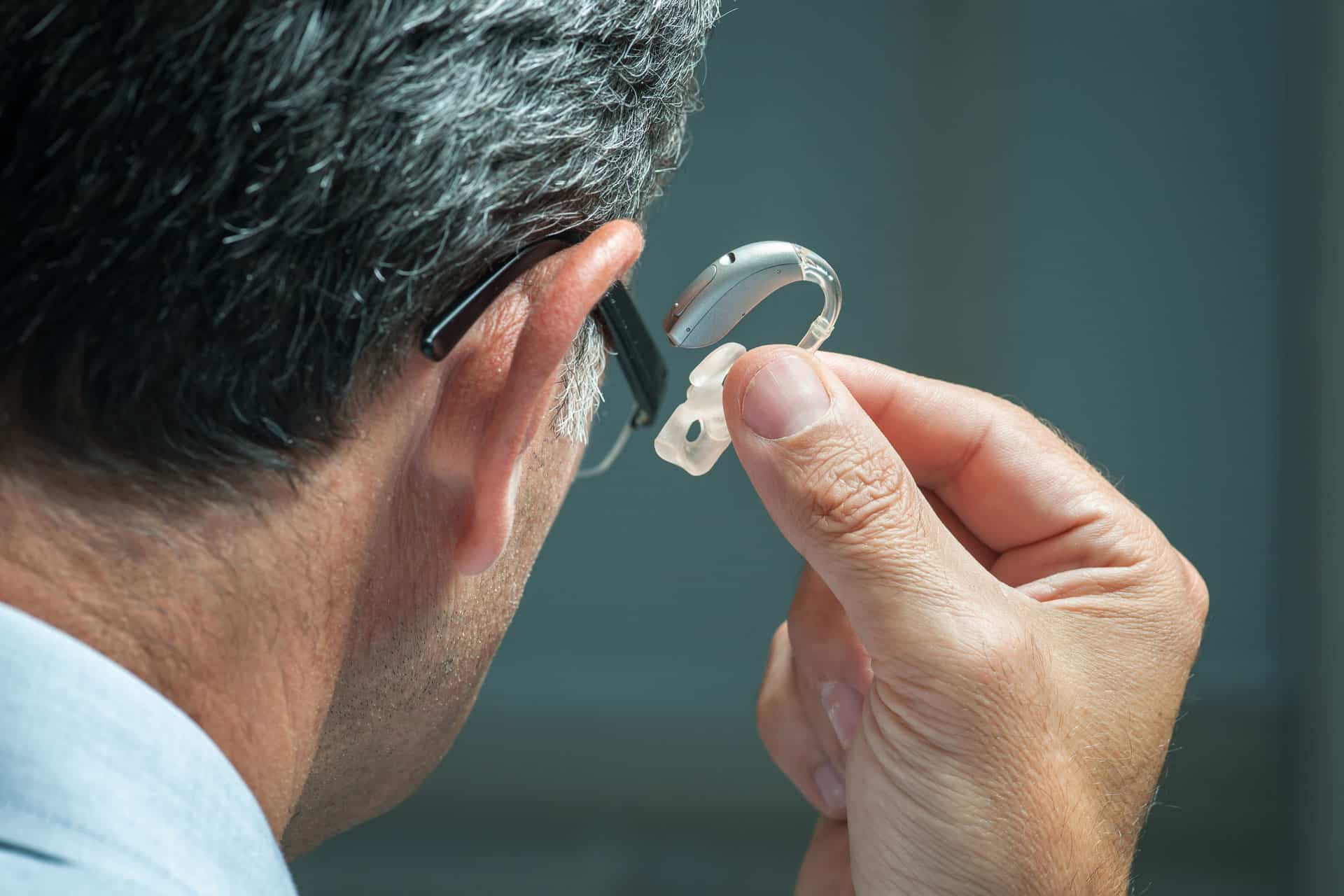Delivery in 2-3 working days
Types of hearing loss
A detailed investigationWhen we talk about hearing loss, many people only think of deafness. But did you know that there are many types of hearing loss, and that they can affect all of us? In the following, we will explore the topic of "types of hearing loss" in more detail.
What is hearing loss?
Simply put, hearing loss is a hearing loss that occurs either suddenly or gradually. It can have a variety of causes and can occur in many ways. You may suddenly find yourself unable to hear high-pitched sounds, or have difficulty holding conversations in noisy environments.
Hearing loss affects not only the volume, but also the clarity of sounds and speech. In some cases, it can also lead to tinnitus, a persistent ringing or buzzing in the ear. It is important to consult a professional at the first sign to discuss possible treatment options.

The two main types of hearing loss
In general, hearing losses can be divided into two main types:
Conductive hearing loss affects the outer ear or middle ear. Here, sound is not effectively conducted to the inner ear.
Sensorineural hearing loss, on the other hand, affects the inner ear or auditory nerve.
Conductive hearing loss
Conductive hearing loss is a specific form of hearing loss that occurs when the process of sound transmission from the outer ear through the ear canal to the middle ear - including the central structures of the eardrum and the three indispensable ossicles (malleus, incus, and stapes) - to the inner ear is disrupted. This phenomenon prevents sound from reaching its destination efficiently and without significant loss, which can lead to hearing impairment.
The causes of this type of hearing loss are many and can be varied in nature. Some of the common reasons include:
- Infections: These are specifically infections that lead to inflammation of the middle ear. These inflammations can affect the normal functions of the ear and lead to hearing problems.
- Blockages in the ear canal: Such blockages can be caused by foreign objects, excessive earwax, or even tumors. These physical obstructions can prevent the normal flow of sound, resulting in conductive hearing loss.
- Problems with the eardrum: This can occur due to perforations, scarring, or other damage to the eardrum that interferes with the eardrum's ability to effectively transmit sound waves.
- Malformations of the ossicles: In some cases, an abnormal structure or malformation of the small ossicles responsible for transmitting sound waves can also cause conductive hearing loss.
It is important to note that in many cases, conductive hearing loss is not permanent and can be improved with appropriate medical or surgical treatments. These treatments aim to correct the underlying problems that prevent normal sound conduction, thus allowing hearing to improve.
Sensorineural hearing loss
Sensorineural hearing loss, also known as sensorineural hearing loss, is a particular type of hearing loss in which the problem is located deep inside the ear. More specifically, the problem lies in the sensory structures of the cochlea, also known as the cochlea of the inner ear, or the auditory nerve. Both are central to the transmission of sound signals from the ear to the brain, where they are interpreted as auditory information.
There are a number of typical causes that can lead to sensorineural hearing loss:
Unfortunately, the sad truth is that this type of hearing loss is often permanent. Unlike many other cells in the body, hair cells and the auditory nerve do not have the ability to regenerate or renew themselves. Therefore, hearing loss caused by this damage often cannot be reversed. However, several treatment options are available, including hearing aids and cochlear implants, which can help minimize the effects of this type of hearing loss and improve the quality of life for those affected.
- Age-related wear and tear of hair cells: With age, the hair cells in the cochlea experience natural wear and tear. Since these cells play an essential role in the perception of sound, their degeneration leads to a reduced ability to effectively detect and transmit sound.
- Noise exposure: Prolonged or intense exposure to noise can place significant stress on hair cells, leading to their damage or complete failure. Workers in noisy industries are particularly at risk.
- Infections: Certain infections can affect the inner ear and cause damage to the hair cells or auditory nerve. These include some viruses and bacterial infections that can directly affect the inner ear.
- Ototoxic medications: some medications are known for their harmful effects on hearing and can cause sensorineural hearing loss. These include certain antibiotics, loop diuretics, and some cancer drugs.
- Sudden hearing loss: In rare cases, a sudden loss of hearing can lead to sensorineural hearing loss. The exact causes of such sudden hearing loss are often unknown, but it is a medical emergency that requires immediate attention.
Combined hearing loss
In some cases, individuals with hearing problems may have a particularly complex form of hearing loss known as mixed hearing loss. This form of hearing loss is characterized by the fact that it includes elements of both conductive hearing loss and sensorineural hearing loss. Strictly speaking, both the path of sound through the ear and the ability of the inner ear to correctly interpret and send sound to the brain are impaired.
This can lead to significant hearing loss and present a particular challenge in treatment, as both aspects of the hearing process are affected. Nevertheless, there are several medical and technical approaches to deal with this complex form of hearing loss and to improve the quality of life of those affected.
How do you recognize hearing loss?
Hearing loss can sometimes be difficult to identify, especially in the early stages or when the degree of hearing loss is mild. In many cases, hearing loss is not obvious and can take subtle forms that make it difficult to detect the presence of an impairment. Certain sounds, especially those of low volume or certain frequencies, may be difficult to hear or even inaudible.
Some of the first signs of hearing loss may include feeling that people around you are mumbling, having difficulty following conversations in noisy environments, or frequently asking to turn up the volume on the television or radio. In addition, a tendency to withdraw from social interactions due to difficulty following conversations may also be an indication of possible hearing loss.
An audiogram, a type of hearing test, can help determine the degree and type of hearing loss. This test uses different frequencies and volumes of sounds to determine a person's specific hearing capacity.
Treatment options for hearing loss
Selecting the appropriate treatment for hearing loss is highly dependent on the specific type and degree of hearing loss an individual is experiencing. Various therapeutic interventions are available that aim to improve an individual's ability to perceive sound, thereby enhancing quality of life.
One of the most common solutions for individuals with hearing loss, especially sensorineural hearing loss, is the use of hearing aids. Hearing aids are high-tech devices that pick up sound waves and amplify them to make them easier to hear by the parts of the ear that still work. They can be customized to meet a person's specific hearing needs, with different models available for different degrees and types of hearing loss.
For cases of profound hearing loss where hearing aids cannot adequately help, a cochlear implant may be a possible option. Cochlear implants are advanced medical devices that are surgically placed in the ear and use electrical impulses to take over the function of the damaged or non-functioning parts of the inner ear. These impulses are then sent directly to the auditory nerve, bypassing the damaged areas and allowing the brain to receive sound information.
In some cases, there may be other treatment options. These include surgical procedures to treat certain types of conductive hearing loss, drug therapy to treat certain types of hearing loss due to infection or inflammation, and audiologic rehabilitation, which provides techniques and strategies to improve listening skills and communication abilities.
Support in everyday life: TV sound processor
Another innovative solution for improving hearing quality in everyday life are TV sound amplifiers such as the OSKAR from faller audio. Thanks to special dialogue optimization, the OSKAR enables users to better understand dialogue and speech on the television - a perfect complement to a hearing aid. This makes watching television a relaxed and enjoyable experience again, even for people with hearing loss.



